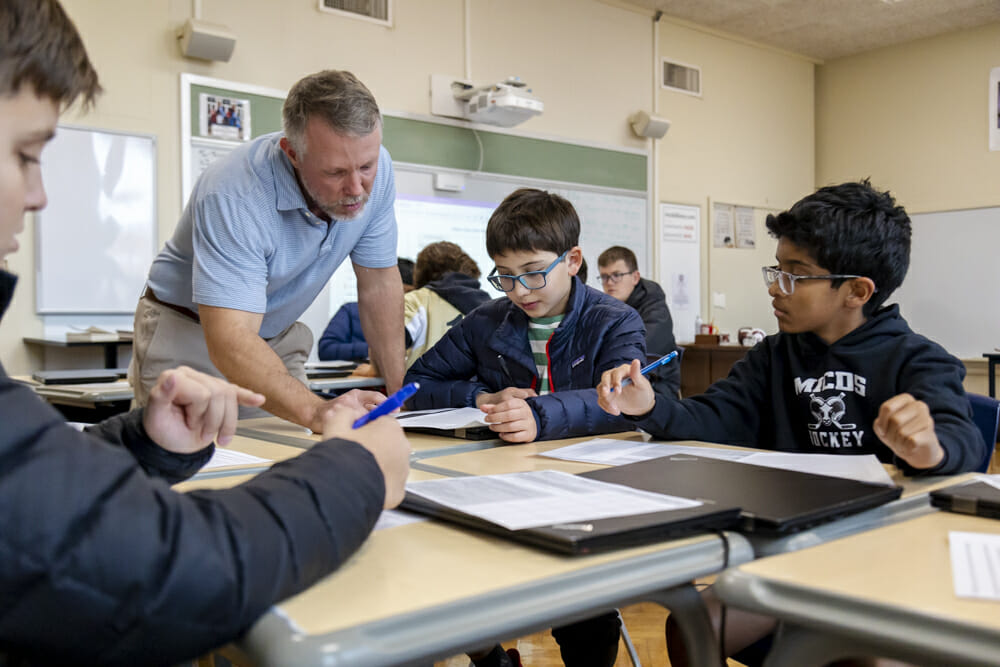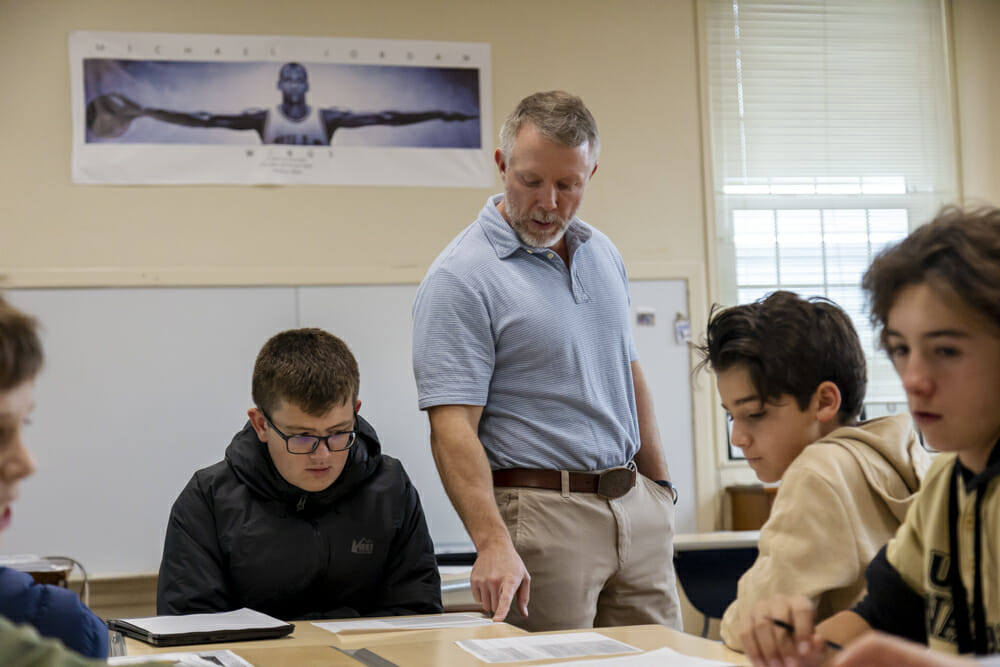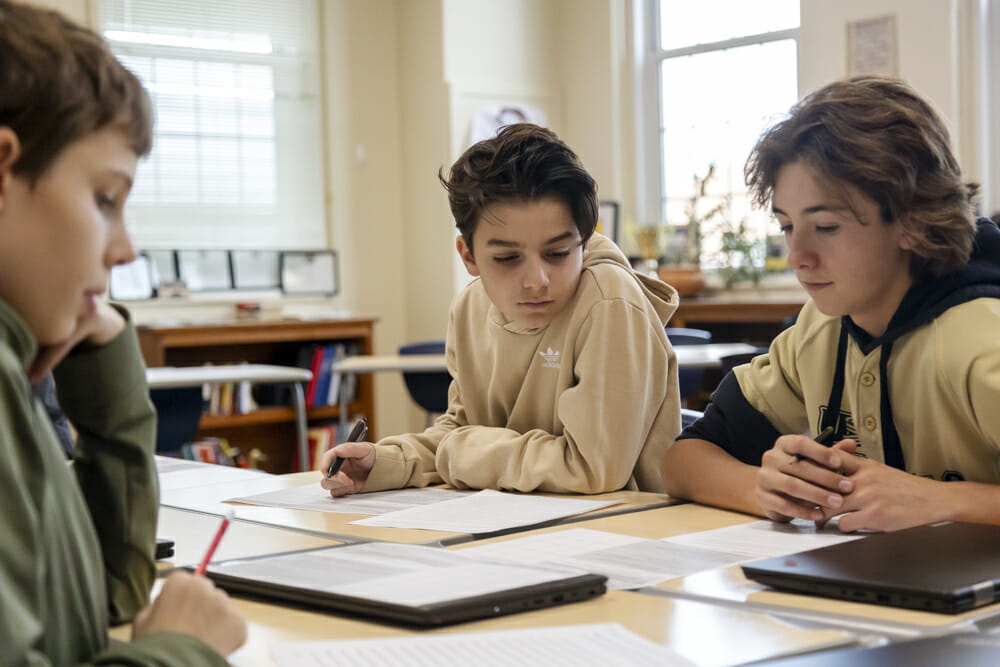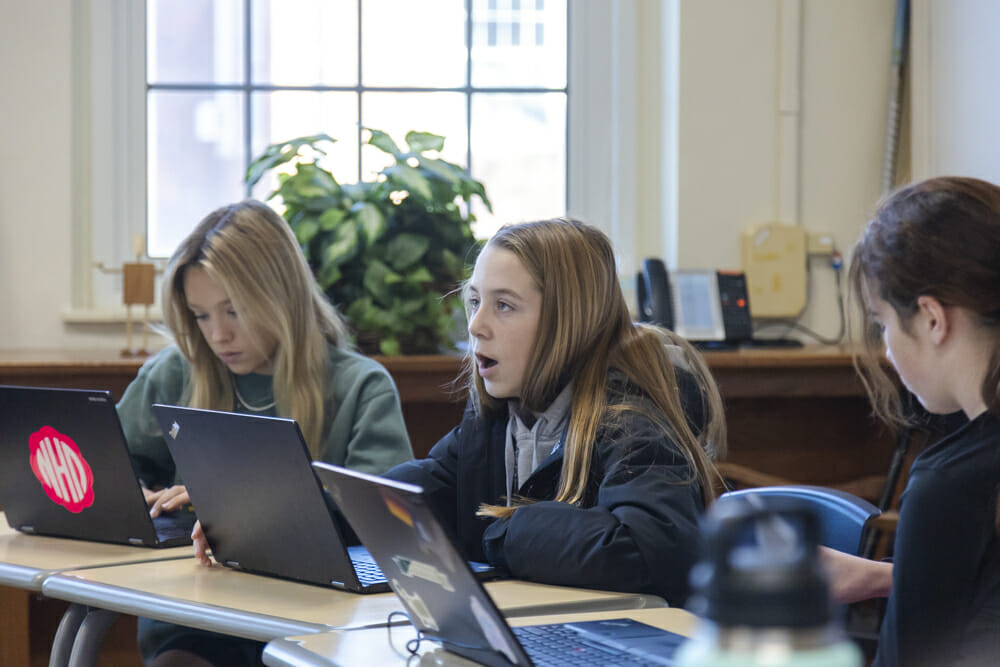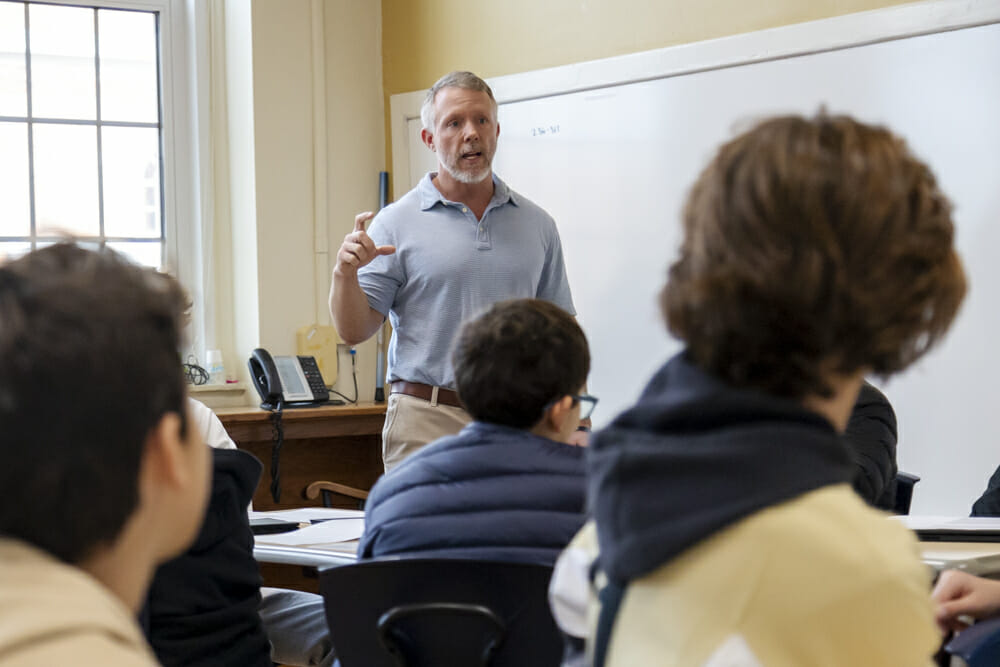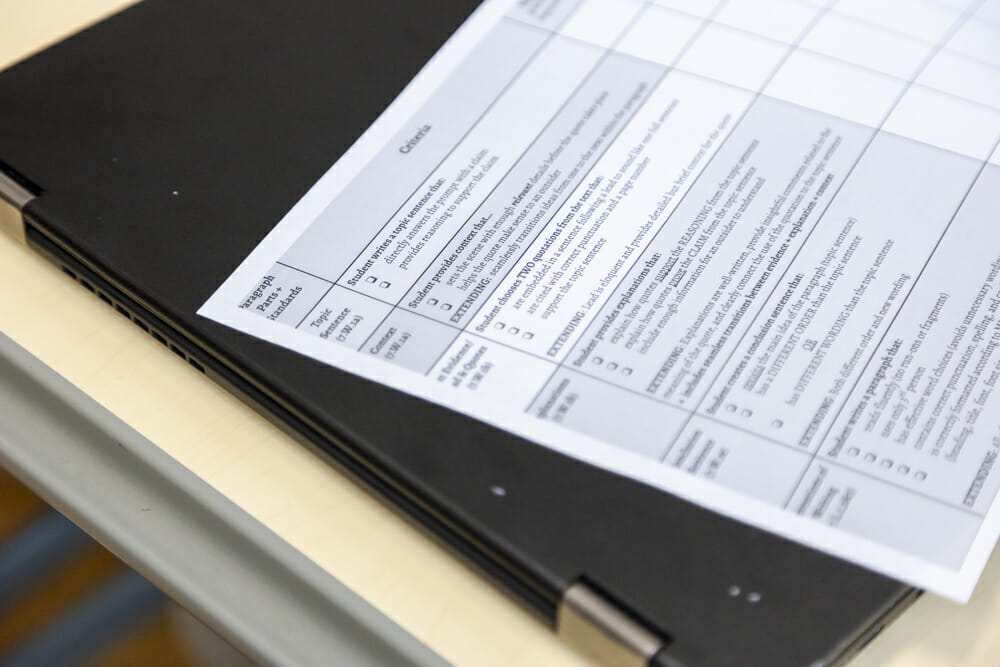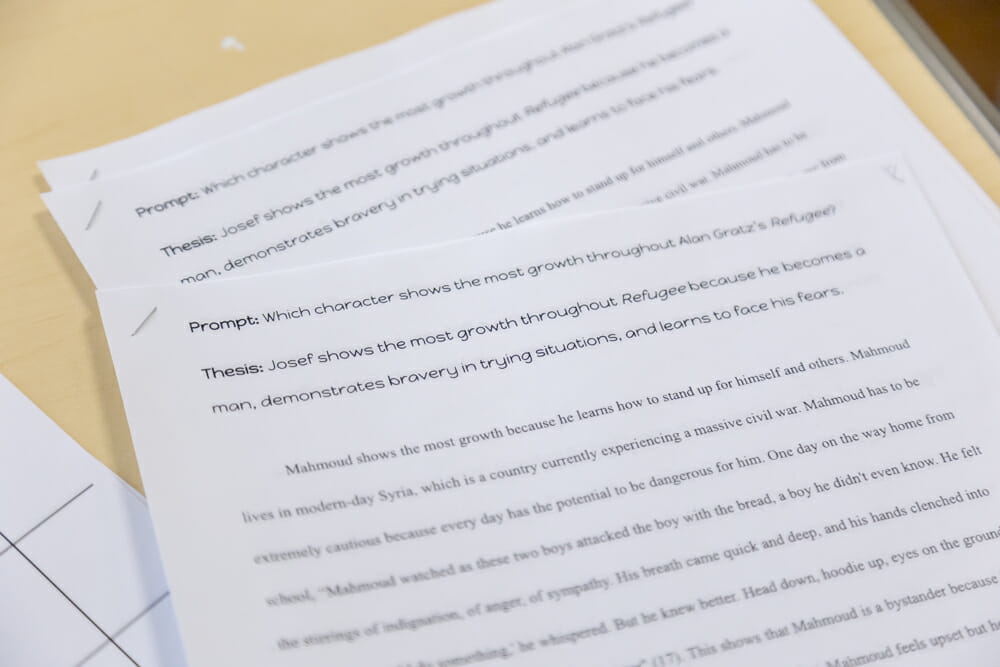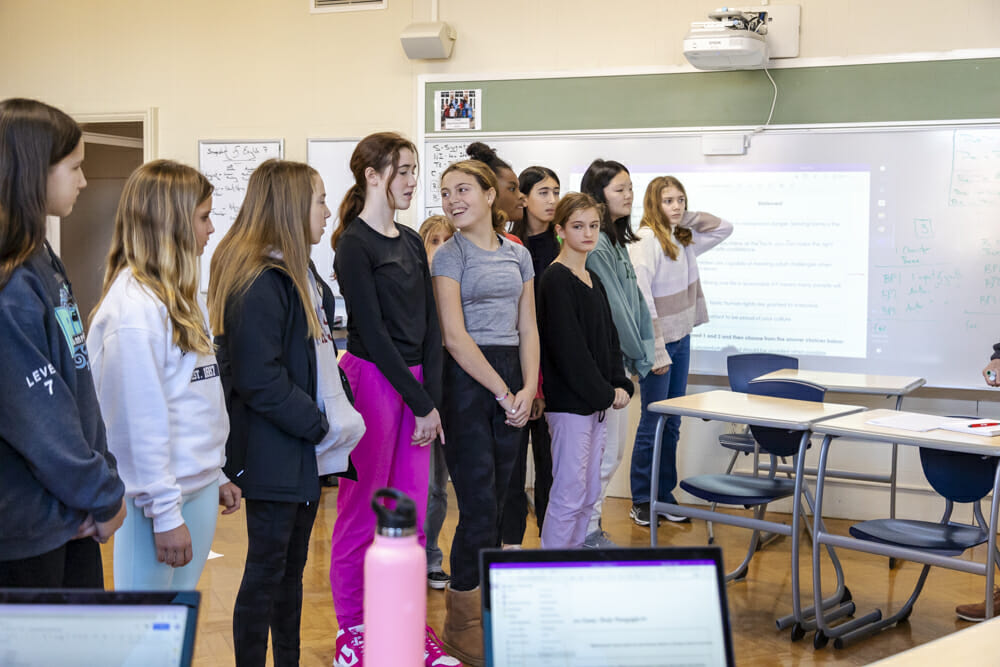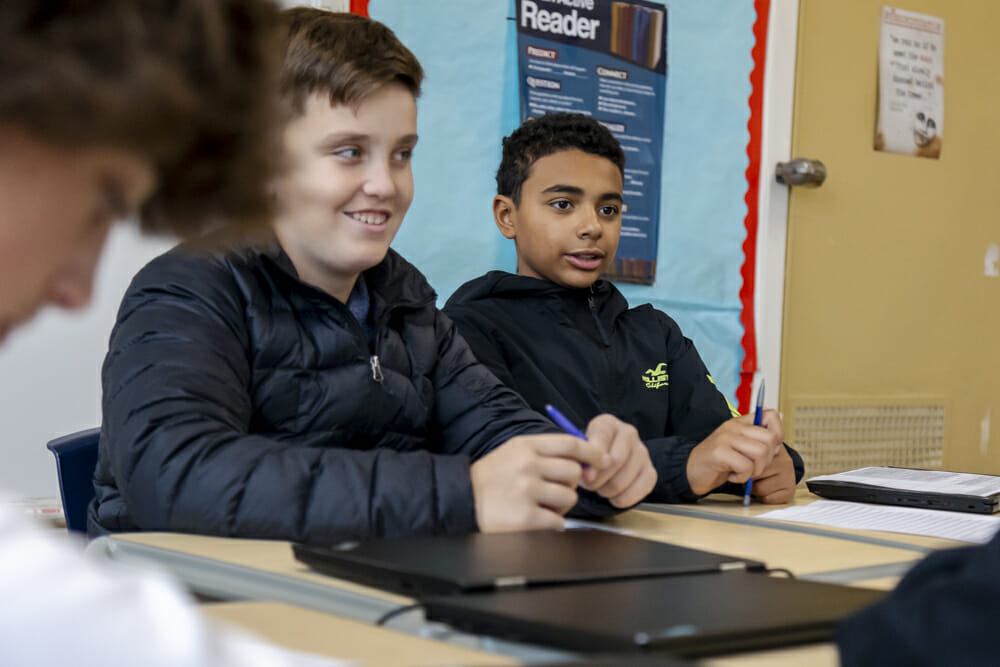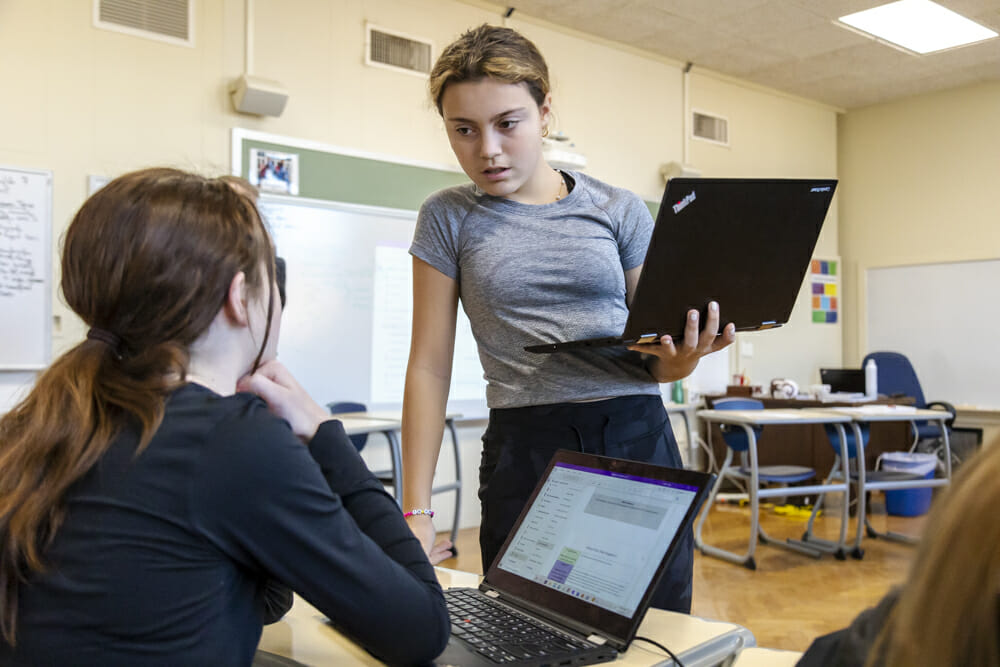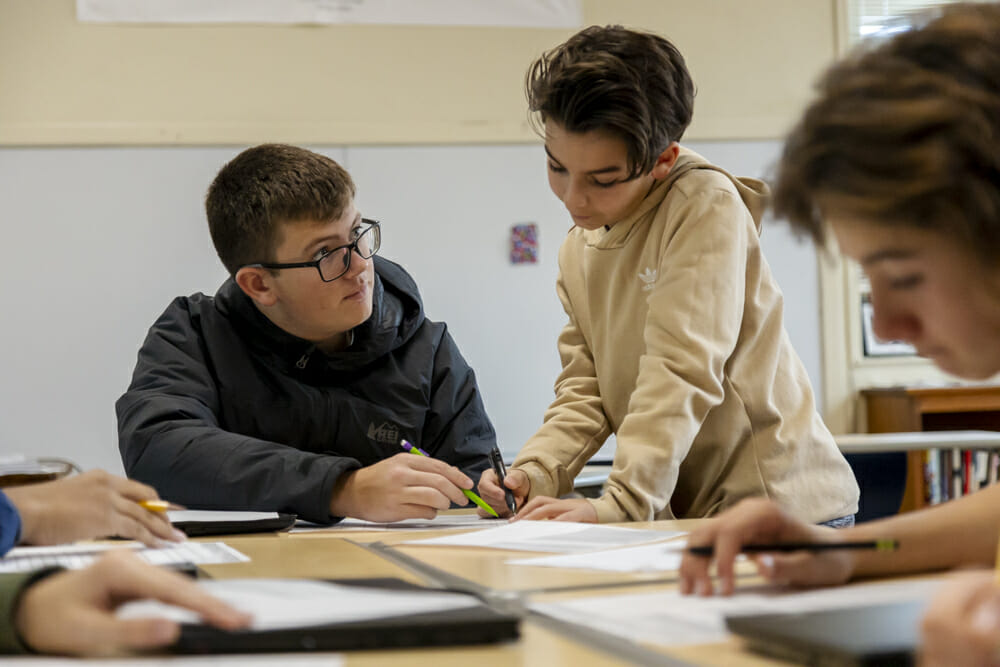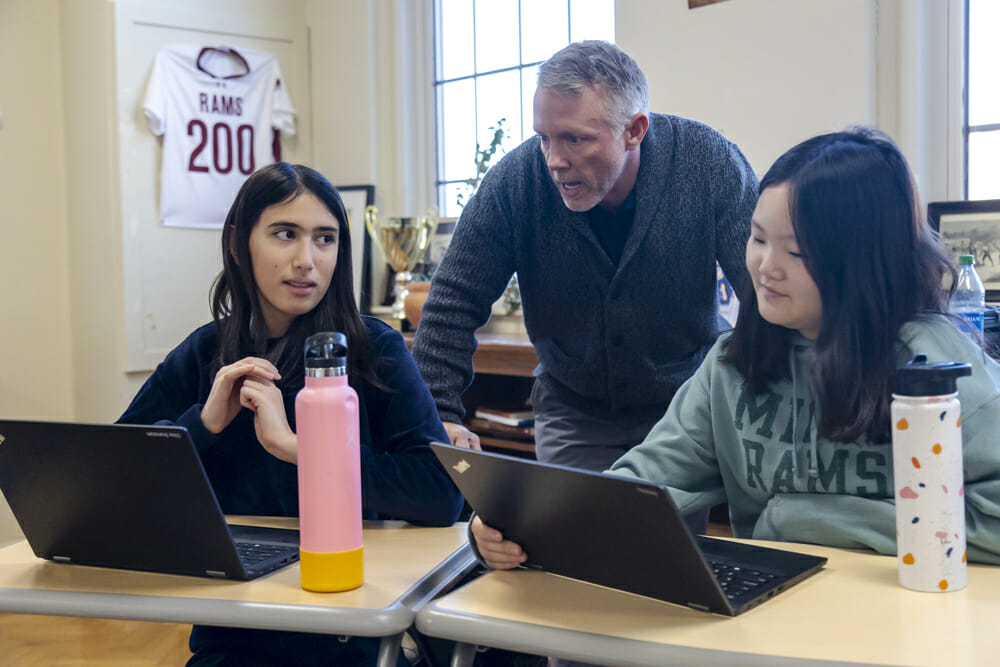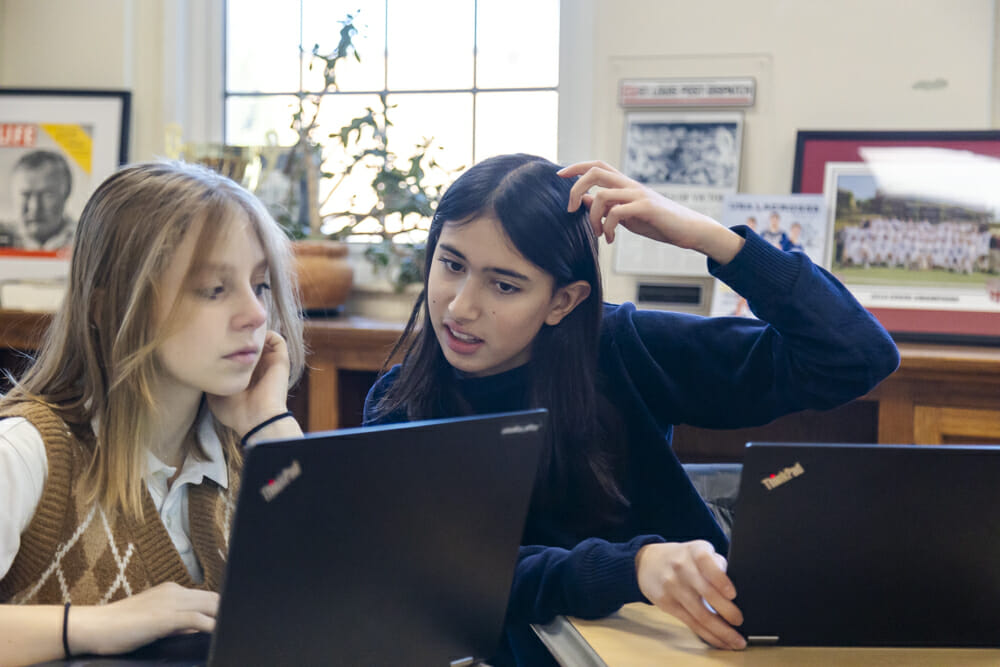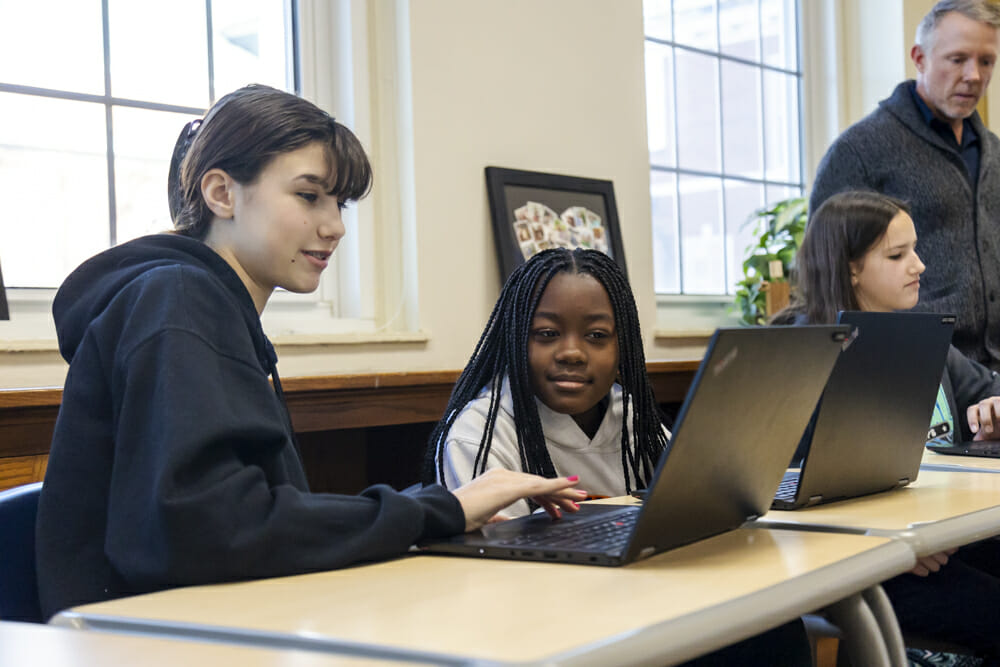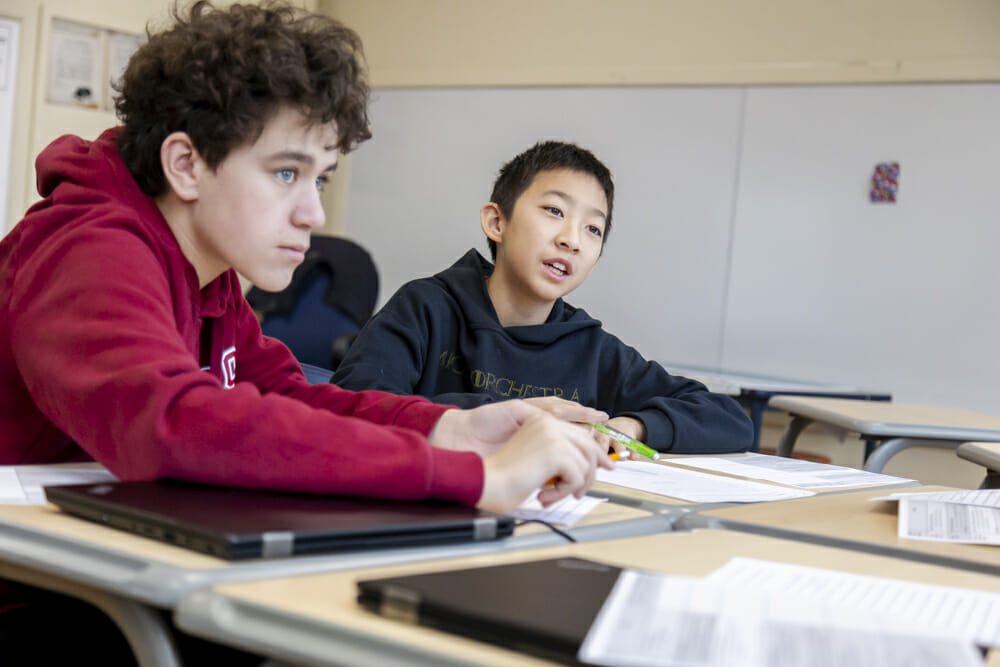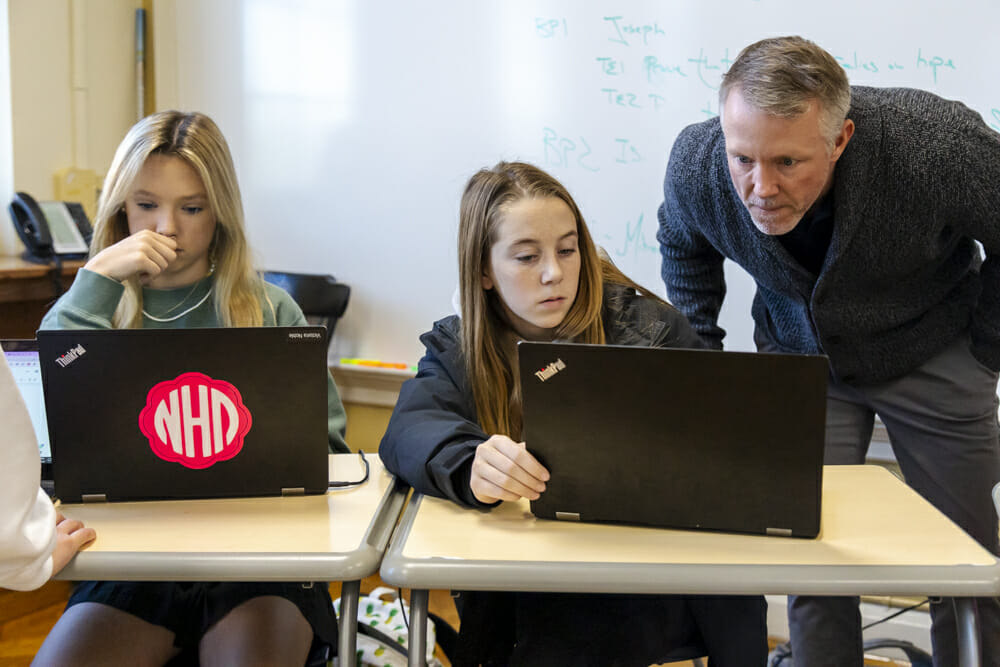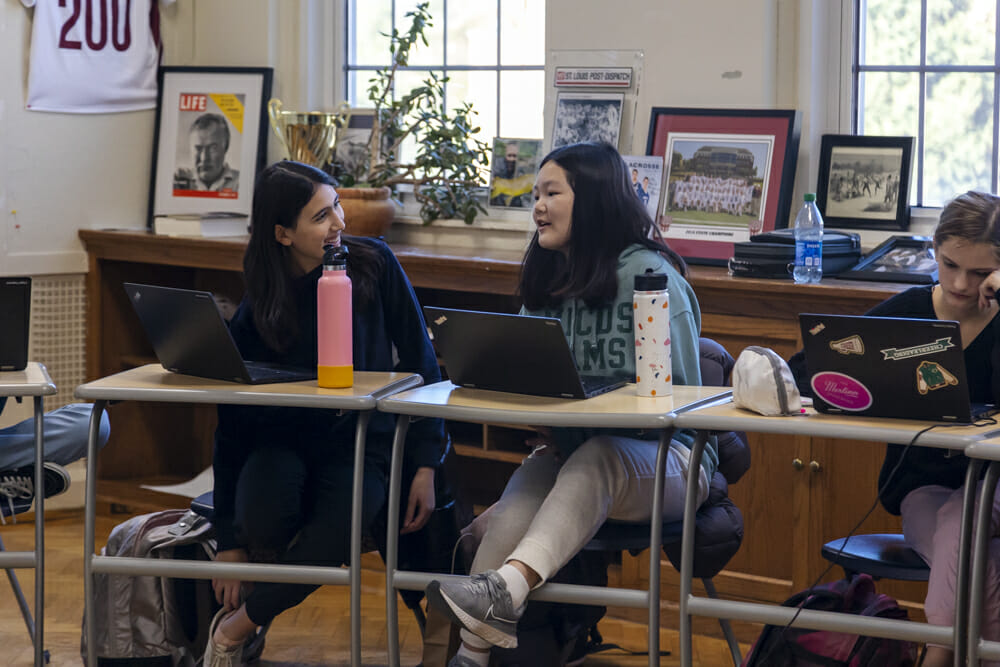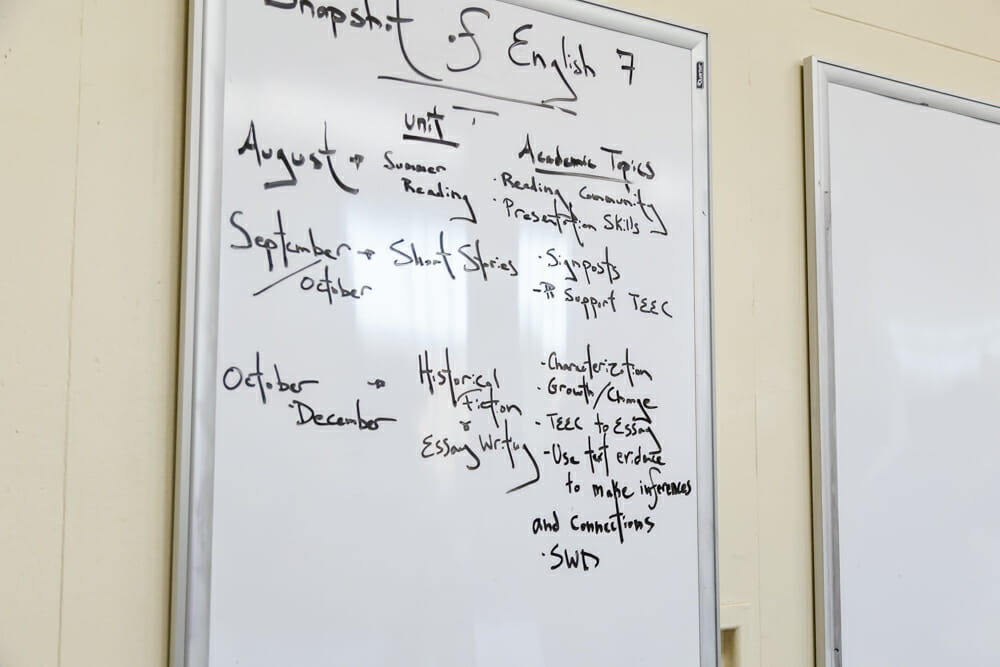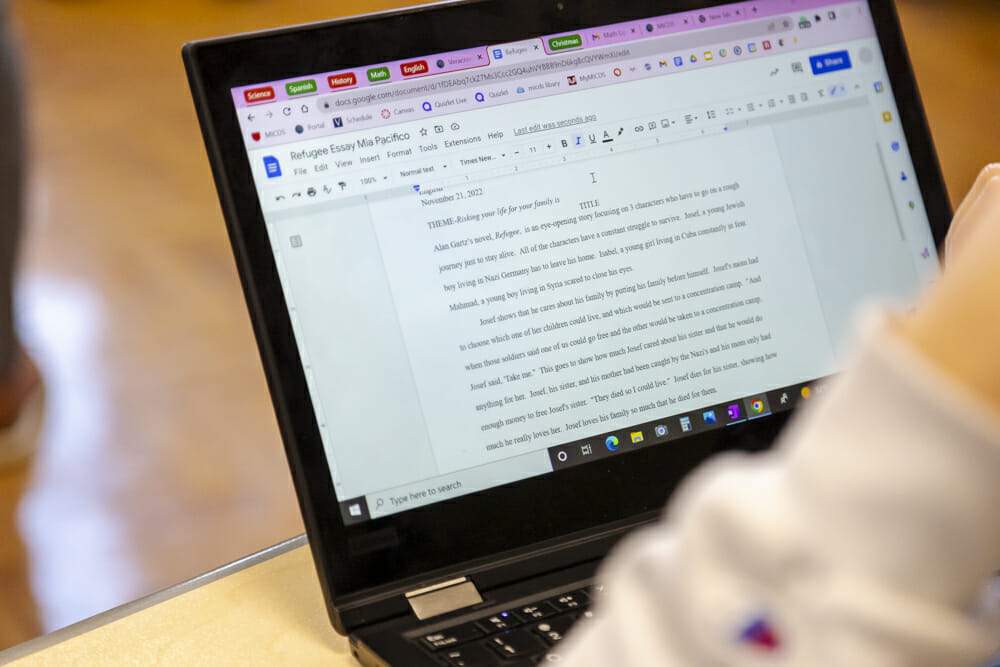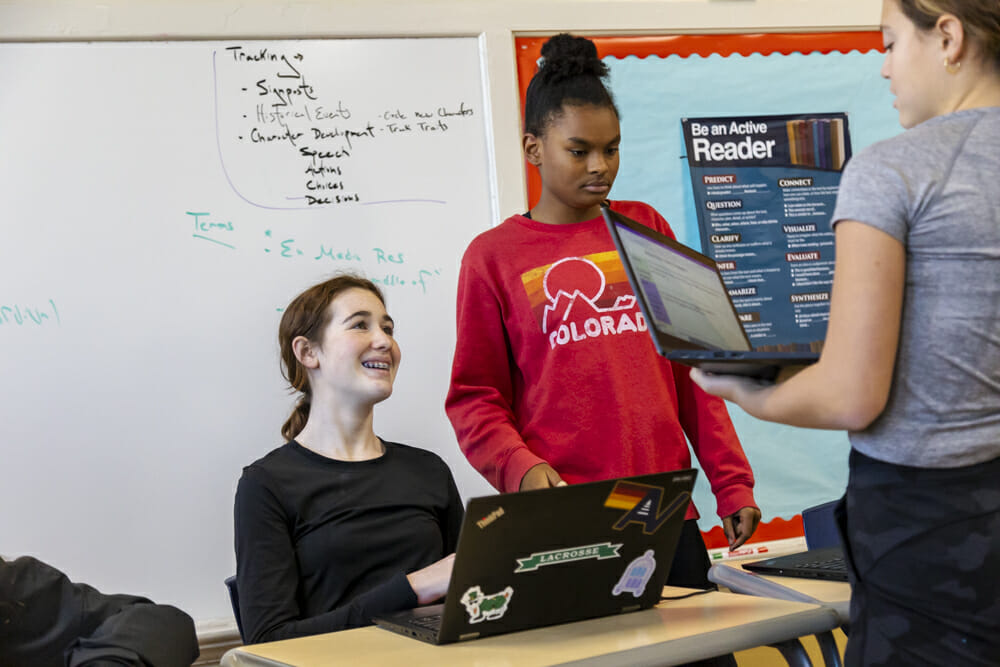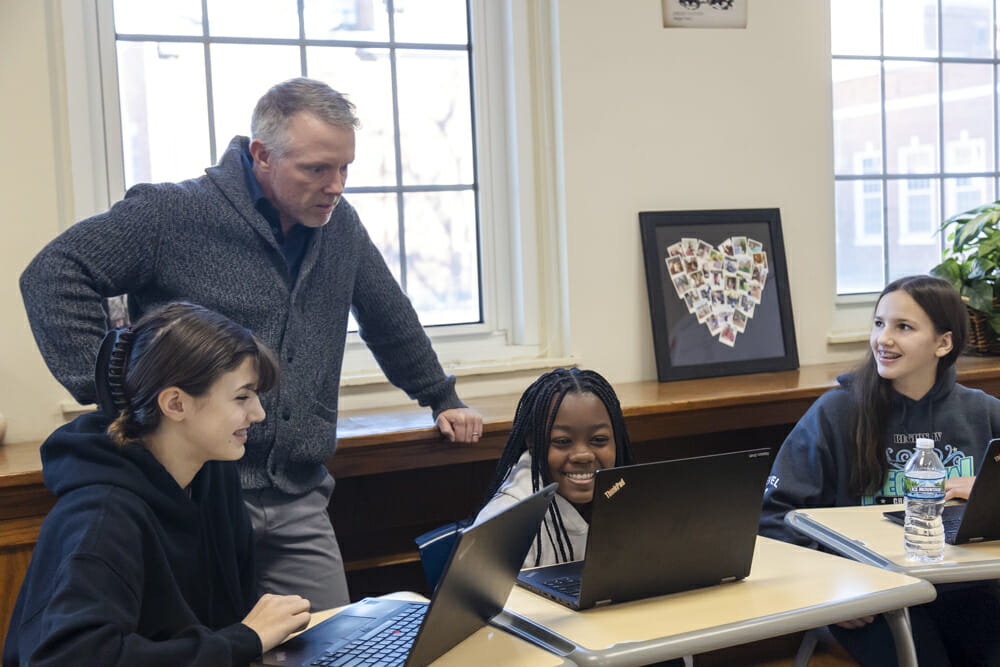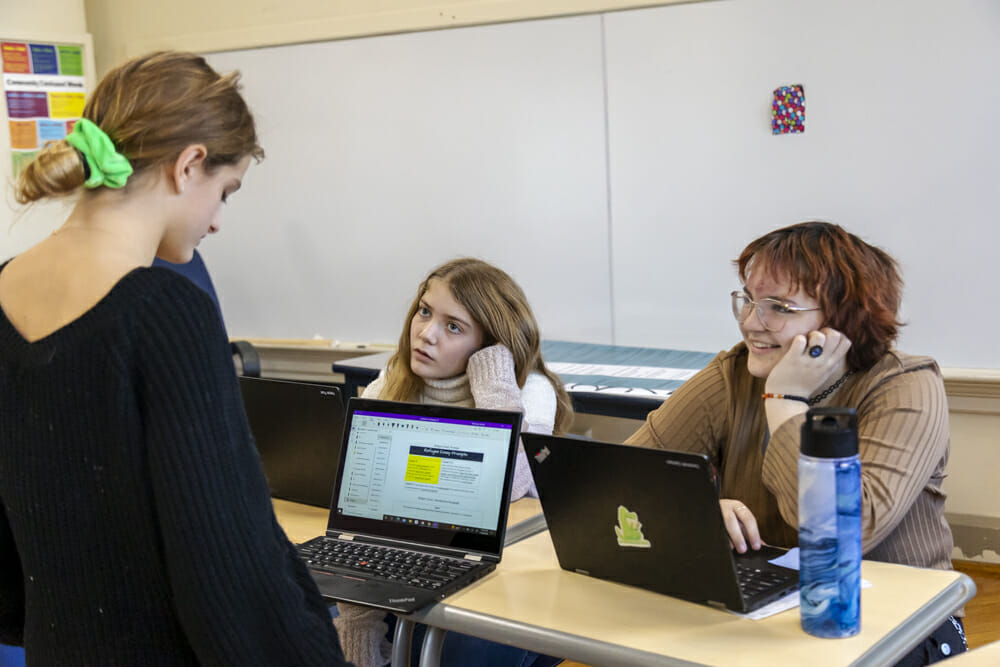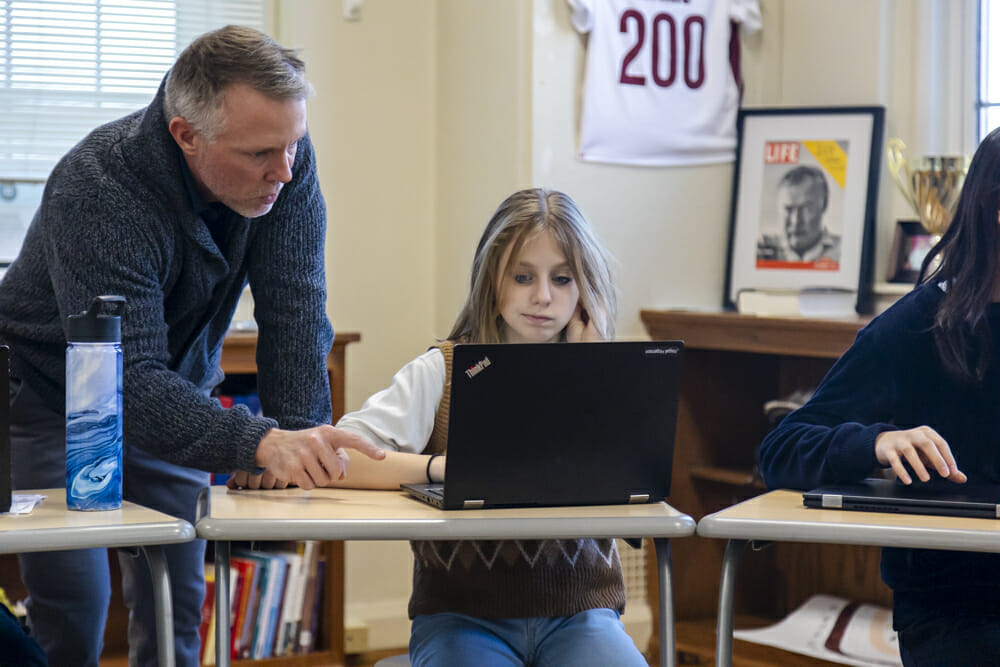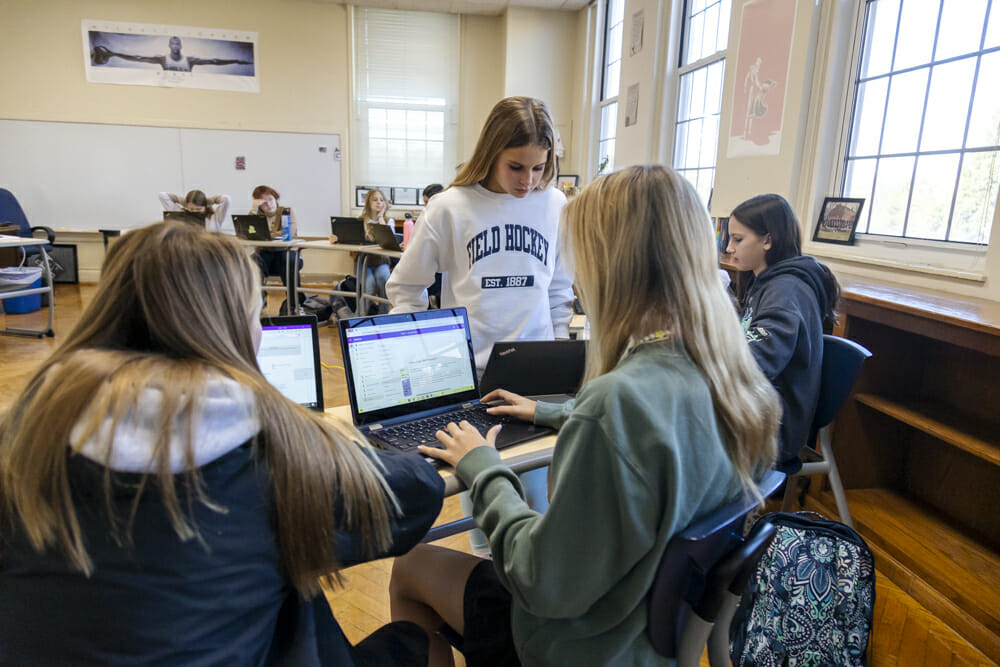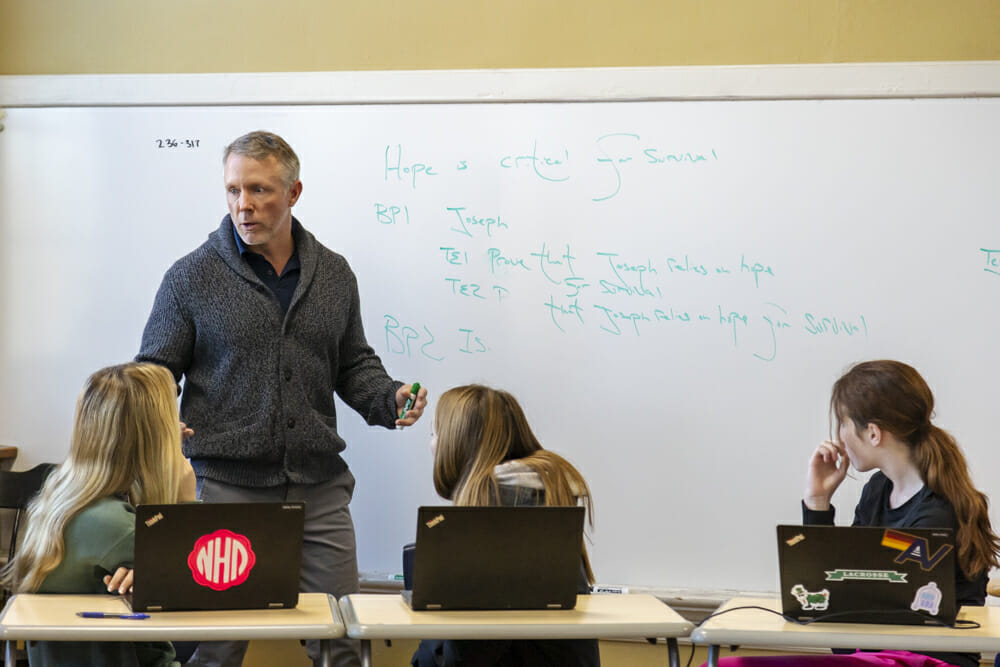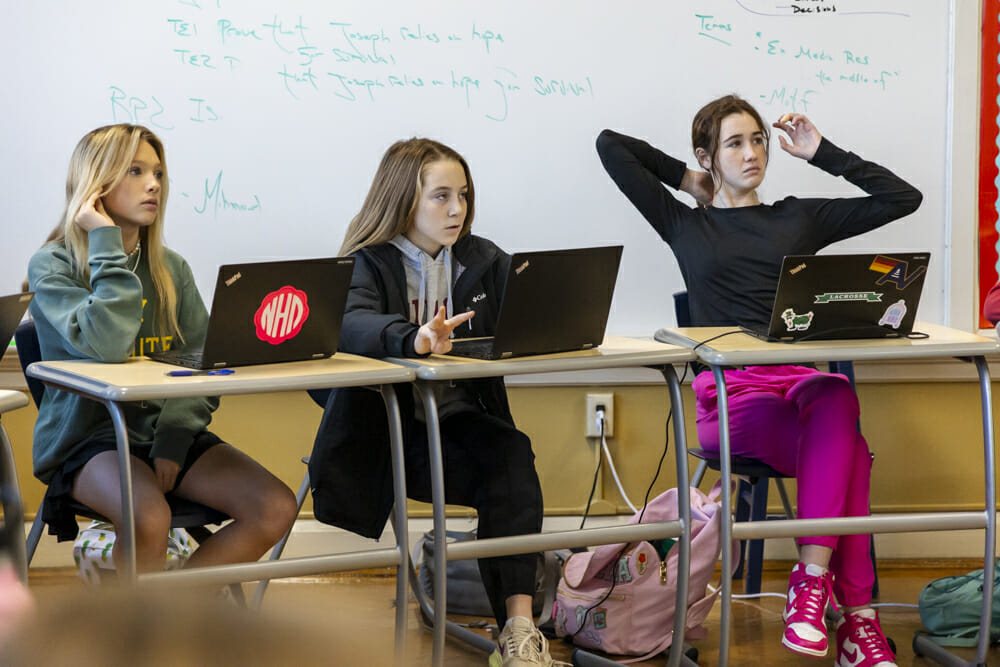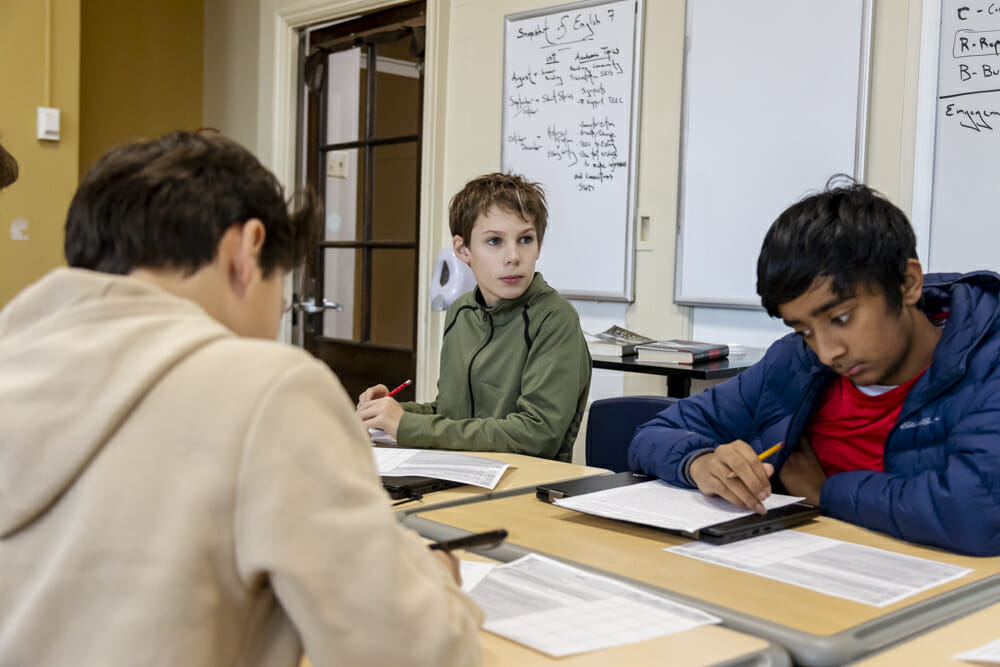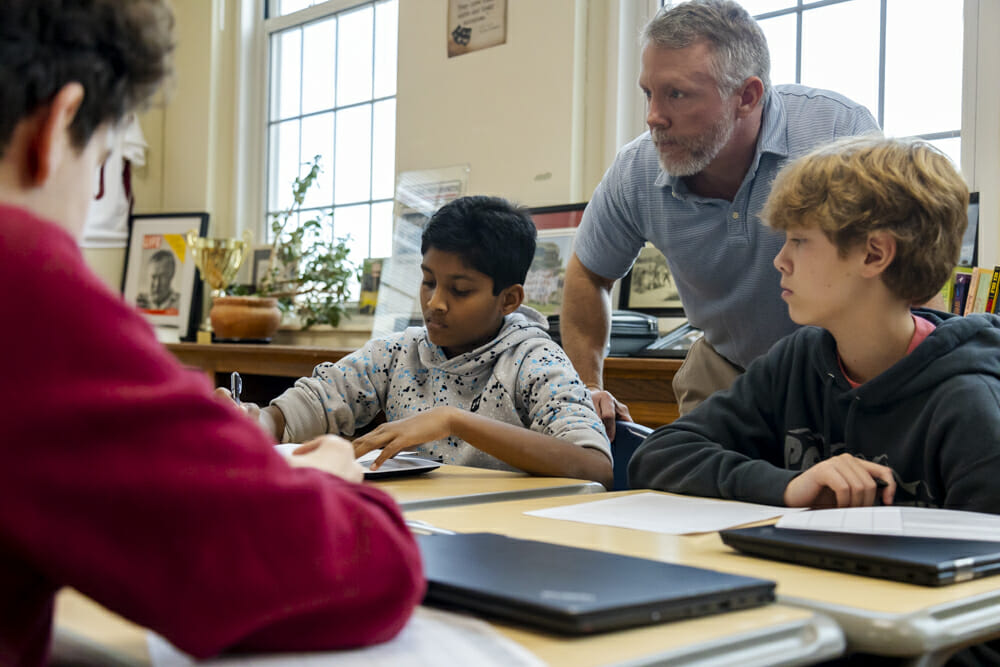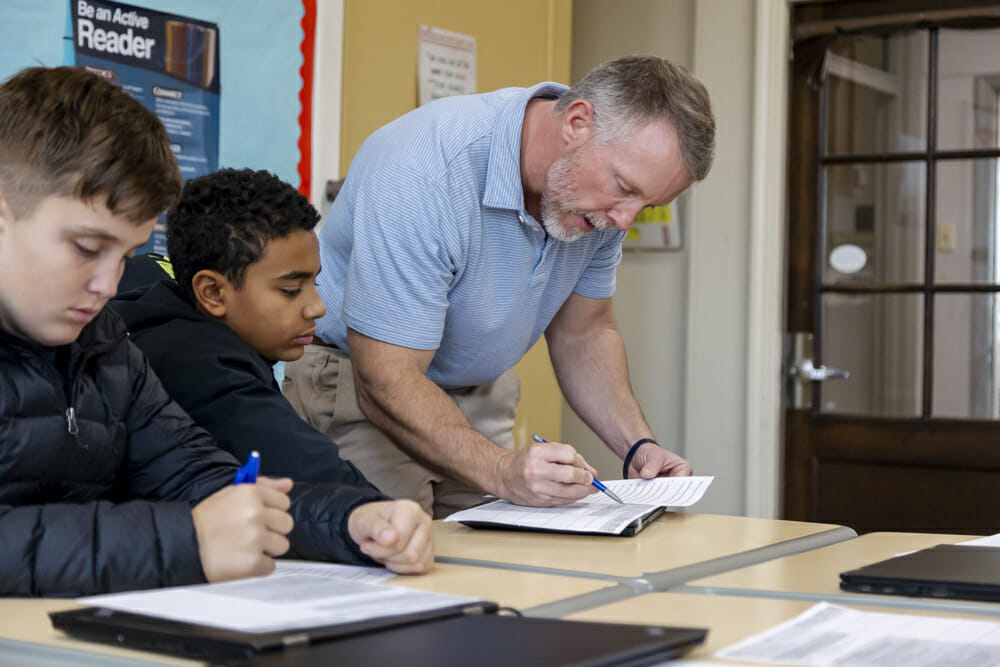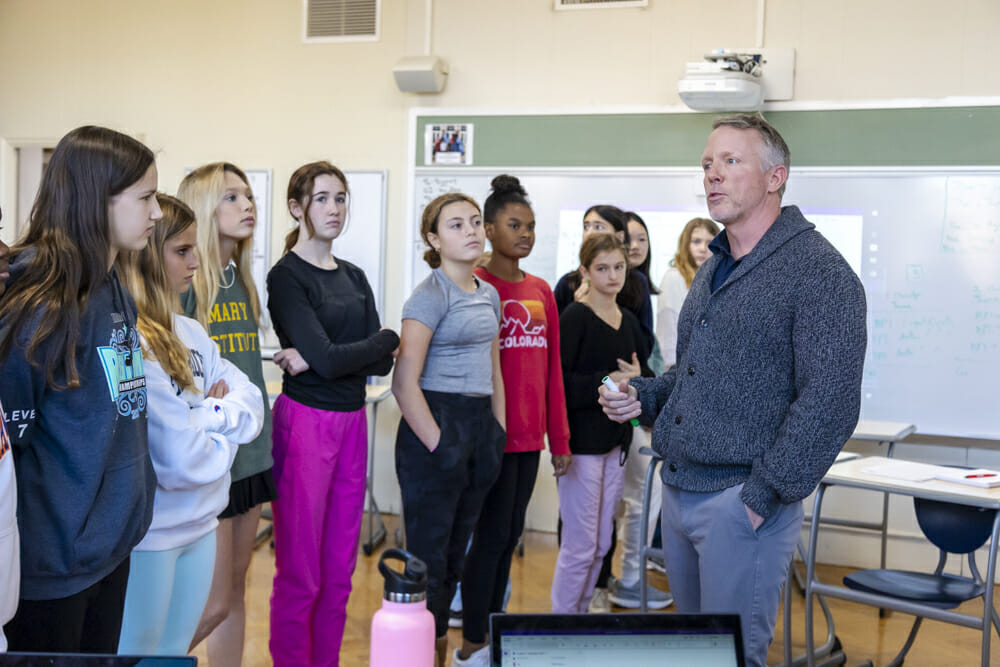No one should have to navigate the choppy waters of essay writing alone, especially if you’re in Middle School. That’s where mentor sentences come in. Mentor sentences are examples of good writing that teachers can use to guide students in discussions about grammar which bridge student knowledge and help them to become better readers and writers.
Seventh-grade English students recently read the Alan Gratz book Refugee and have started writing essays to summarize characters, plots, and themes. But first, they explored maps of other essays before embarking on their own writing journey.
Middle School English Teacher Andy Kay said, « The writing process can be overwhelming for young people as they cope with learning to process and synthesize large chunks of information. If I can help students angle into the process, they can chip away and build from there. A critical component of figuring out the angle from which one should approach the material is to not only ensure that each person understands the targets that they are trying to hit, but that they also have a North Star they can follow. »
This is where mentor paragraphs and sentences come in. For this particular essay, students began their process by reviewing essays from previous students and analyzing them with a standards-based rubric. Their evaluation of those essays helps them understand what is expected of them and provides an opportunity to understand the teacher’s expectations.
« As an eighth-grade teacher last year to teaching seventh this year, it’s critically important for students to learn these skills now. Mentor sentences allow for greater clarity and appease the anxieties that come when students have to write multiple paragraphs, » said Kay.
Sometimes sentences break the conventional rules, providing an opening for discussion and a deeper understanding. Students can make observations, identify parts of the sentence structure, explore the impact of the words, and create their own version. And mentor sentence discussions can be used with a whole class, in small groups, or in an individual setting, making it a universal and flexible format for teachers and students.
Students are enjoying the process of finding their own inner compass with essay writing. Maria Wansong ’28 said, « While writing my Refugee essay, some challenges I faced were stating a theme that could be debatable while not being too broad or too narrow but could also be supported by my evidence. »
« The most difficult part of writing an essay is getting everything to flow together, » said Trip Scanlon ’28. « Every single word in an essay matters, and it is really difficult to find the right words, evidence, and structure. »
Victoria Noble ’28 is looking forward to creatively going through the process of developing an essay. She said, « We have had open-ended discussions about the book, annotated previously written essays, and created organizers that help us craft our essays in a thoughtful, organized manner. »
